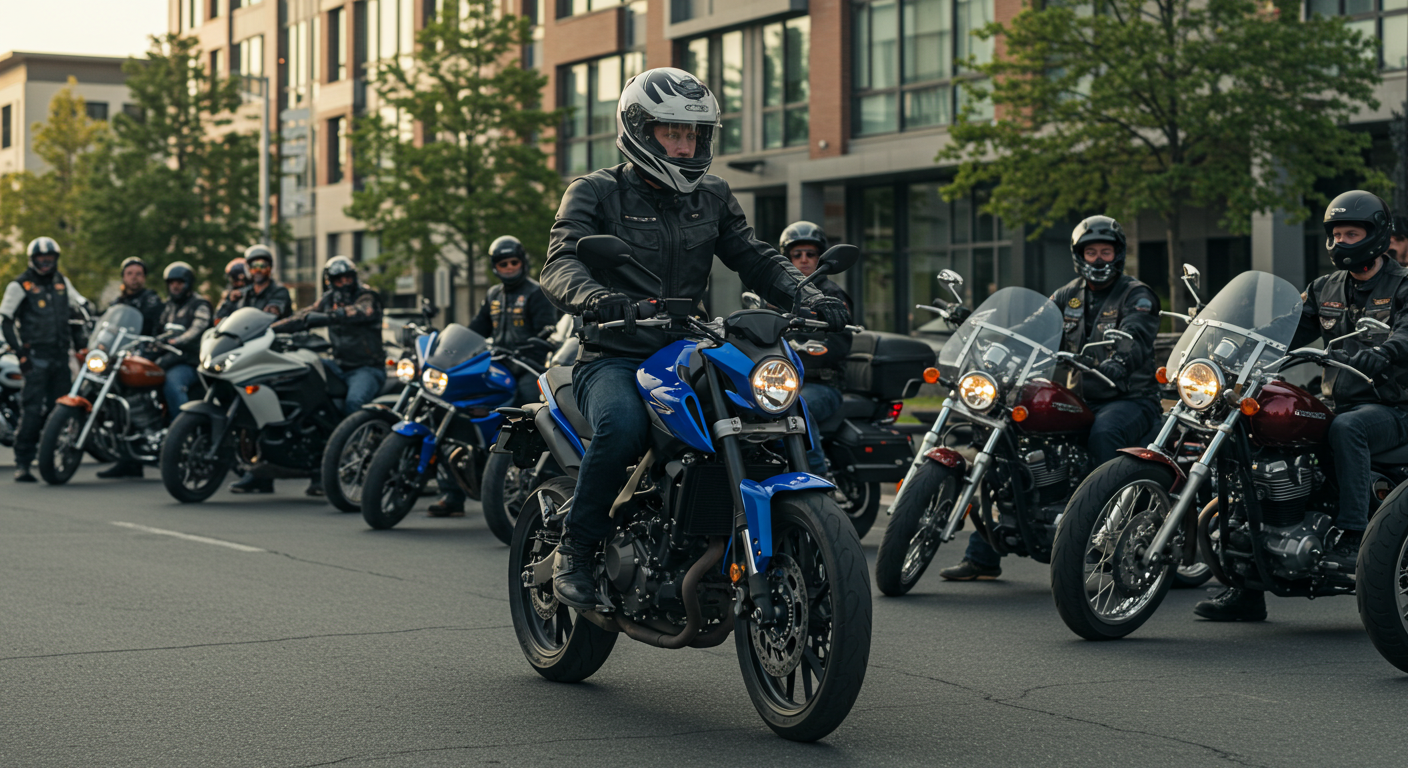Introduction: More Than Just a Ride
The roar of an engine, the freedom of the open road, the smell of asphalt in the morning—these are the soul-stirring experiences that unite bikers around the world. But beneath the romantic imagery lies a hard truth: gate keeping in motorcycle culture. It’s unspoken, but visible. It’s outdated, but persistent. And it’s something we must address if we want a riding world that truly welcomes all.
At GHC Sportswear, we believe motorcycles are for everyone—not just those who “look the part.” In this article, we unpack the roots, symptoms, and solutions to gate keeping in the biker community.

1. What Is Gate keeping in Motorcycle Culture?
Gate keeping refers to the practice of setting unwritten rules about who belongs and who doesn’t. In **motorcycle culture**, this shows up as:
- Judging riders by the brand or style of bike
- Questioning experience based on appearance
- Dismissing women, LGBT+, or people of color, riders
- Mocking beginner riders or urban commuters
Gate keeping in motorcycle culture creates barriers instead of bonds.
2. The “Classic Biker” Image: Why It’s Limiting
For decades, the archetypal rider has been portrayed as:
- Male
- White
- Middle-aged
- Tough and leather-clad
This image, while nostalgic for some, is exclusionary for others.
Problems with the stereotype:
- It discourages diversity in events, clubs, and media
- It ignores the global and multicultural reality of riding
- It feeds the idea that anything different is inferior
Gate keeping in motorcycle culture thrives on nostalgia that resists evolution.
3. Women Riders: Still Fighting for a Seat
Women now make up nearly 20% of motorcycle owners in some countries, but you wouldn’t know it from most marketing materials or club rosters.
Challenges women face:
- Mans planing and condescension at dealerships
- Not being taken seriously on group rides
- Limited gear options tailored to women
Gate keeping in motorcycle culture often frames female riders as outliers instead of equals.
4. Racial and Cultural Barriers in Biking
Motorcycling is global, yet in many Western riding circles, there’s a lack of representation—and often, subtle exclusion—of Black, Asian, Indigenous, and Latinx riders.
Forms of cultural gate keeping:
- Questioning authenticity or knowledge
- Tokenizing riders of color
- Implying they “don’t fit” the scene
When gate keeping in motorcycle culture becomes cultural, it stops being about riding and starts being about conformity.
5. LGBT Riders: Riding With Pride—and Caution
The LGBTQ+ biker community exists, thrives, and contributes deeply to riding culture, but often operates on the fringes due to:
- Fear of being targeted or mocked
- Clubs refusing membership or visibility
- Events lacking inclusivity or respect
Safe spaces like LGBTQ+ riding groups shouldn’t be the only places riders feel welcome.
Gate keeping in motorcycle culture makes some riders choose between identity and safety.
6. The Beginner Shaming Epidemic
Everyone starts somewhere. But beginner riders often face:
- Mockery for small-displacement bikes
- Criticism for wearing full safety gear
- Dismissal for cautious riding style
This elitism discourages new riders from sticking with the sport.
The phrase “earn your stripes” should never mean “suffer unnecessary humiliation.”
Gate keeping in motorcycle culture undermines growth by crushing confidence early.
7. Social Media and the Cool Factor
While platforms like Instagram and TikTok help grow the riding community, they also fuel a new kind of gate keeping:
- Image-based worth: Is your gear stylish enough?
- Performance pressure: Are you fast, fearless, and photogenic?
- Exclusivity: Are you riding with the “right” people?
The curated riding life often excludes real-world diversity and authenticity.
8. Club Culture: Brotherhood or Barrier?
Motorcycle clubs are a proud tradition—but some still operate on outdated norms that promote exclusivity.
Common red flags:
- Gender-based membership restrictions
- Unspoken ethnic or cultural barriers
- Rigid rules about bike brands or makes
Healthy club culture supports mentorship, growth, and mutual respect—not boundaries.
9. The Role of Gate keeping in Motorcycle Culture in Inclusion
At GHC Sportswear, we design motorcycle gear that works for everyone. Whether you’re an urban commuter, weekend cruiser, or sport bike fanatic, your gear should reflect your safety and style—not stereotypes.
How inclusive gear design fights gate keeping:
- Unisex and gender-specific sizing
- Multicultural design cues
- Affordability without sacrificing protection
Inclusivity in gear helps dismantle gate keeping in motorcycle culture from the ground up.
10. How to Challenge Gate keeping in Motorcycle Culture keeping
If you love motorcycles, you have the power to make the culture better. Here’s how:
Welcome new riders warmly
- Call out exclusionary behaviour
- Promote diverse voices and stories
- Choose brands and events that value inclusion
Ride for All:
Don’t just ride for yourself. Ride in a way that others feel invited to join.
Conclusion: Let’s Leave the Gate keeping in Motorcycle Culture Open
Gate keeping in motorcycle culture doesn’t protect the sport—it limits it.
- It alienates passionate people.
- It stifles innovation.
- It keeps biking from becoming the global, inclusive, thrilling culture it’s meant to be.
At GHC Sportswear, we believe the future of motorcycling is open, diverse, and united by a love for the ride—not a checklist of who’s “authentic.”
“The road doesn’t care what you look like. It cares how you ride.”
Let’s create a riding world where everyone is welcome—helmet on, throttle open.
